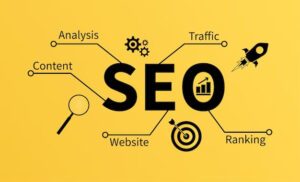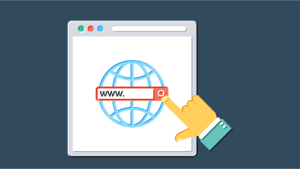You’re losing customers right now. As you read this, potential buyers are visiting your website, checking out your social media, and evaluating your business—only to choose your competitor instead. The most frustrating part? You probably don’t even know why it’s happening. That’s about to change. This 5-minute marketing audit will expose the exact reasons customers abandon your business and provide immediate fixes you can implement today. No complex analytics, no expensive consultants—just straightforward diagnostics that reveal the truth about your marketing effectiveness.
The Customer Leak Detector: Your 60-Second Website Reality Check
Open your website in an incognito browser window right now. You have exactly five seconds to answer this question: What does your business do, and why should someone care? If you can’t answer instantly, neither can your visitors. This simple test reveals the first and most devastating reason businesses lose customers—unclear value propositions that force visitors to work too hard to understand your offering.
The website reality check extends beyond your homepage. Click through to any service page and apply the same five-second test. Is the benefit immediately clear? Is the next action obvious? Studies show that 55% of visitors spend less than 15 seconds on a website. If your value proposition isn’t crystal clear in those precious seconds, you’re hemorrhaging potential customers to competitors who communicate more effectively. Professional web design and development isn’t about aesthetics—it’s about instant clarity that converts visitors into customers.
Now test your site’s load speed using Google’s PageSpeed Insights. If your score is below 50, you’re losing approximately 7% of conversions for every second of delay. Mobile users are even less forgiving—53% abandon sites that take over three seconds to load. This isn’t a technical problem; it’s a revenue problem. Every second of load time directly correlates to lost customers and decreased sales. The fix often requires nothing more than image optimization and code cleanup, yet most businesses ignore this easy win.
The Trust Erosion Test: Why Customers Choose Competitors
Here’s a sobering statistic: 88% of consumers trust online reviews as much as personal recommendations, yet most businesses treat reviews as an afterthought. Pull up your Google Business Profile right now. When was the last review posted? How many reviews do you have compared to competitors? More importantly, how did you respond to negative feedback? This two-minute check reveals whether you’re building or destroying trust with every customer interaction.
The trust audit goes deeper than review quantity. Search for your business name plus “reviews” or “complaints” in Google. What appears on the first page? Unhappy customers are 3x more likely to share their experiences than satisfied ones, meaning a single unaddressed complaint can cost dozens of potential sales. Smart businesses monitor their online reputation religiously and respond to every review—positive or negative—within 24 hours. This simple practice can increase conversion rates by up to 35%.
Social proof extends beyond reviews to every aspect of your digital presence. Check your website for testimonials, case studies, and trust badges. Are they prominently displayed at decision points, or hidden on an obscure page? Effective social media marketing strategies showcase real customer success stories across all platforms, creating a web of credibility that overcomes skepticism. If prospects can’t quickly find evidence that others have succeeded with your business, they’ll find a competitor who provides that assurance.
The Engagement Diagnostic: Where Your Content Falls Flat
Navigate to your most recent blog post or social media update. Check the engagement metrics—not just views, but actual interactions. If less than 2% of viewers are commenting, sharing, or clicking through, your content is failing its primary purpose: creating connection. This isn’t about vanity metrics; it’s about understanding whether your marketing messages resonate with your target audience or fall on deaf ears.
The content audit reveals a harsh truth most businesses don’t want to hear: you’re probably talking about yourself too much. Count how many times your content says “we,” “our,” or your company name versus addressing “you” and “your” customer challenges. The most effective content marketing flips this ratio, focusing 80% on customer problems and only 20% on your solutions. When content serves the audience first, engagement naturally follows.
Examine your content frequency and consistency. When did you last publish? Is there a predictable schedule, or do you post sporadically when inspiration strikes? Inconsistent content publishing trains your audience to ignore you. Customers need 7-12 touchpoints before making a purchase decision. If you’re not showing up regularly with valuable content, competitors who maintain consistent presence will capture those customers instead. The fix isn’t creating more content—it’s creating better content on a reliable schedule.
The Conversion Pathway Analysis: Following the Money Trail
Open your Google Analytics or website analytics platform. Navigate to your conversion funnel or user flow report. Where do most visitors drop off? If more than 70% leave after viewing just one page, you have a severe pathway problem. This quick check reveals whether your marketing attracts the right audience and whether your website guides them effectively toward conversion.
The pathway analysis often exposes a critical disconnect between marketing messages and landing page experiences. Click on your most recent ad or social media promotion, then follow the customer journey. Does the landing page match the ad’s promise? Is the call-to-action clear and compelling? Studies show that message match can improve conversion rates by up to 50%, yet most businesses send traffic to generic pages that confuse rather than convert.
Test your conversion process as a customer would. Try to make a purchase, schedule a consultation, or submit a contact form. Count the clicks required. Time the process. Note any confusion or friction points. If it takes more than three clicks or two minutes to convert, you’re losing customers to impatience. Superior SEO brings traffic, but conversion optimization turns that traffic into revenue. Every additional step in your conversion process costs approximately 20% of potential customers.
The Competition Reality Check: Your Market Position Truth
Google your primary service or product plus your city name. Where do you appear? If you’re not on the first page, you’re essentially invisible to 75% of potential customers. This brutal reality check reveals whether your digital marketing efforts are actually reaching your target market or just creating busy work that doesn’t drive results.
Now search for your main competitors. Visit their websites and social media profiles. What are they doing that you’re not? More importantly, what aren’t they doing that creates opportunity for you? The most successful businesses don’t copy competitors—they identify gaps and fill them. This competitive analysis takes just minutes but provides insights that can reshape your entire marketing strategy.
The competition check extends to marketing channels and tactics. Are competitors using video while you stick to text? Are they active on platforms you’ve ignored? Do they offer guarantees or unique value propositions you haven’t considered? Sometimes losing customers isn’t about doing something wrong—it’s about competitors doing something better. Regular competitive audits ensure you stay ahead rather than playing catch-up.
The Multi-Channel Consistency Scanner
Pull up your website, Facebook page, Google Business Profile, and any other marketing channels on separate browser tabs. Do they tell the same story? Are your logos, colors, and messages consistent? This visual audit immediately reveals whether you’re presenting a professional, cohesive brand or a confusing, fragmented identity that undermines trust.
Inconsistency kills conversions. When your Facebook page says one thing, your website says another, and your print and ship marketing materials say something else entirely, customers lose confidence. They wonder which version to believe, whether you’re professional, and ultimately whether they can trust you with their business. Brand consistency across all channels can increase revenue by up to 23%, yet most small businesses treat each platform as a separate entity.
Check your contact information across all platforms. Is your phone number, address, and email consistent everywhere? NAP (Name, Address, Phone) inconsistencies not only confuse customers but also hurt your local SEO rankings. Google treats each variation as a different business, diluting your authority and pushing you down in search results. This simple fix takes minutes but can dramatically impact your visibility and credibility.
Your Immediate Action Plan: Stop the Customer Bleeding Now
This audit likely revealed multiple issues, but trying to fix everything at once guarantees failure. Instead, prioritize based on impact and effort. Start with the quick wins—issues you can fix in under an hour that will immediately impact customer experience. Often, this means clarifying your homepage value proposition, speeding up your website, or responding to neglected reviews.
Create a 30-day improvement sprint focused on the biggest customer leak your audit revealed. If your website confuses visitors, dedicate the month to clarity. If trust is your issue, focus on building social proof. If conversions are failing, optimize your pathway. Concentrated effort on one area yields better results than scattered attempts at everything. Document your starting metrics, implement changes, and measure results after 30 days.
Schedule monthly 5-minute audits to catch new issues before they become expensive problems. Customer preferences, competitive landscapes, and digital platforms constantly evolve. What works today might fail tomorrow. Regular audits ensure you stay ahead of problems rather than reacting after customers have already left. The businesses that thrive are those that treat optimization as an ongoing process, not a one-time project.
The Bottom Line: Every Lost Customer Is a Choice
Here’s the uncomfortable truth this audit reveals: losing customers isn’t accidental—it’s a choice. Every unclear message, every slow-loading page, every unanswered review is a decision to prioritize other things over customer retention. The good news? You can choose differently starting right now. The fixes revealed in this audit aren’t complex or expensive. They simply require commitment to putting customer experience first.
The businesses winning in 2025 aren’t necessarily those with the biggest budgets or flashiest websites. They’re the ones that consistently audit, optimize, and improve their customer experience. They recognize that keeping existing customers is far more profitable than constantly chasing new ones. They understand that small improvements compound into competitive advantages.
Your 5-minute audit is complete, but your journey to stop losing customers has just begun. The question now is simple: Will you act on what you’ve discovered, or will you continue accepting customer loss as inevitable? The choice—and the customers—are yours to keep or lose.
Ready to transform your marketing from a customer-losing liability into a customer-keeping asset? ByteInspired specializes in comprehensive marketing optimization that plugs every leak in your customer journey. Our proven process has helped Toronto businesses reduce customer loss by up to 60% while increasing conversion rates by an average of 35%. Don’t let another day pass watching customers choose your competitors. Contact us today to schedule your professional marketing audit and start keeping the customers you’ve worked so hard to attract.
To visit our social media please click on Facebook and Instagram





